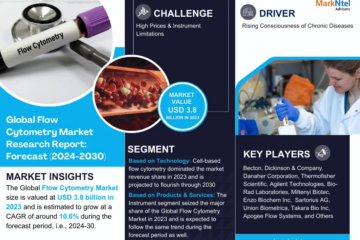Introduction
SAP FICO (Financial Accounting and Controlling) is a fundamental module within the SAP ERP system that plays a critical role in managing an organization’s financial transactions and internal cost controls. It combines two key components: Financial Accounting (FI) for external financial reporting, and Controlling (CO) for internal cost management. Aspiring SAP professionals can check the SAP FICO Course Fees and join a training course for the best skill development. One of the vital aspects of SAP FICO is product costing, which involves calculating the costs associated with producing goods or services. This process is essential for pricing strategies, profitability analysis, and ensuring efficient financial management, making SAP FICO a cornerstone for businesses across various industries.
All About SAP FICO
SAP FICO (Financial Accounting and Controlling) is a crucial module within SAP ERP that focuses on financial management and internal cost control. It integrates financial accounting (FI) and cost controlling (CO) to help organizations manage their financial transactions, reporting, and analysis efficiently.
FI handles external reporting (balance sheets, profit, and loss statements), while CO focuses on internal processes like cost centers, profit centers, and internal orders. This module is vital for ensuring that financial data is accurately captured, processed, and reported.

SAP FICO is widely used across industries for financial planning, analysis, and decision-making. Professionals skilled in SAP FICO are in demand for roles such as SAP FICO Consultant, Financial Analyst, and SAP Functional Consultant, where they contribute to optimizing an organization’s financial operations.
Product Costing In SAP FICO
Product costing in SAP FICO is a critical aspect of cost accounting that focuses on determining the costs associated with producing goods or services. It involves tracking and analyzing various cost elements, including raw materials, labor, overhead, and other production-related expenses, to calculate the cost of a product. Many SAP FICO Questions And Answers involve questions on Product costing. This information is essential for pricing, profitability analysis, and decision-making.
Key Components of Product Costing in SAP FICO
- Cost Elements: These represent the different categories of costs incurred during production, such as direct materials, direct labor, and overhead costs. In SAP, these costs are mapped using primary and secondary cost elements.
- Cost Centers and Activity Types: Cost centers are organizational units where costs are incurred. Activity types represent specific production activities like machining or assembly. Costs are allocated to products based on the activities performed in each cost center.
- Bill of Materials (BOM) and Routing: The BOM lists the materials required for production, while routing defines the sequence of operations needed to manufacture the product. Together, they help in calculating the material and labor costs.
- Costing Variant and Costing Run: The costing variant defines the parameters for costing, such as valuation methods and overhead rates. The costing run is used to mass-calculate costs for multiple products or materials, generating cost estimates.
- Overhead Calculation: Overheads, such as factory rent or utilities, are allocated to products based on predefined rules. This ensures that the total cost of production is accurately captured.
- Standard Costing vs. Actual Costing: SAP FICO supports both standard costing, where costs are pre-determined and used for budgeting and variance analysis, and actual costing, which reflects real costs incurred during production.
Product costing in SAP FICO enables businesses to manage their production costs effectively, optimize pricing strategies, and improve profitability through accurate cost management and analysis.
SAP FICO Uses And Benefits
SAP FICO (Financial Accounting and Controlling) is a vital module organizations use to manage their financial data and internal cost accounting processes. Therefore, investing in a SAP FICO course can be a wise career move. The SAP FICO Course Fees are nominal and ensure the best guidance for aspiring professionals.
Uses:
- Financial Management: SAP FICO enables companies to maintain a complete and accurate record of financial transactions, including general ledger, accounts receivable, and accounts payable.
- Reporting and Analysis: It provides robust tools for generating financial statements, balance sheets, profit and loss statements, and other critical financial reports.
- Cost Control: The Controlling (CO) component allows organizations to monitor and manage internal costs by analyzing cost centers, profit centers, and internal orders.
- Integration: SAP FICO integrates seamlessly with other SAP modules like Sales and Distribution (SD), Materials Management (MM), and Human Capital Management (HCM), ensuring consistent data flow across business functions.
Benefits:
- Improved Financial Accuracy: SAP FICO ensures that financial data is consistent and accurate, reducing errors and discrepancies in financial reporting.
- Enhanced Decision-Making: Real-time financial reporting and analysis help management make informed decisions regarding budgeting, forecasting, and financial planning.
- Compliance: SAP FICO supports compliance with international accounting standards and regulations, reducing the risk of legal and financial penalties.
- Cost Efficiency: Organizations can optimize their operations and improve profitability by effectively managing costs and analyzing financial data.
SAP FICO is essential for businesses looking to streamline their financial processes and enhance overall financial management.
Conclusion
SAP FICO is a comprehensive financial management tool that integrates financial accounting and cost control. It enables organizations to maintain accurate financial records, generate insightful reports, and manage internal costs effectively. By supporting compliance, enhancing decision-making, and improving cost efficiency, SAP FICO plays a crucial role in optimizing financial operations and driving profitability across industries, making it an indispensable asset for businesses aiming for robust financial management.



0 Comments